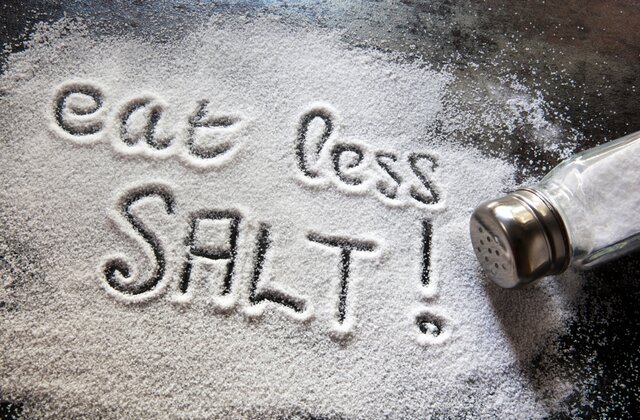How much is enough salt?
If you haven’t heard this question yet then believe me it’s on the way soon.
There’s always been a lot of discussion on how much salt we should take in a day and the consequences in case we don’t.
While a number of times you might have been warned that you are taking more than the required amount, other times you have been reminded that you shouldn’t consume less salt.

In Kenya, a majority don’t necessarily watch mind their salt intake until they get older and quickly realize they need to check their health following a series of hospital visits.
So how much salt is enough?
Sodium — often simply referred to as salt — is found in nearly everything you eat and drink.
It occurs naturally in many foods, is added to others during the manufacturing process and is used as a flavoring agent at home and restaurants.
READ ALSO: Malala Speaks About Ditching OKA After Kalonzo Invited Raila To Wiper’s NDC
Sodium has been linked to high blood pressure, which causes damage to your blood vessels and arteries when chronically elevated.

In turn, this increases your risk of heart disease, stroke, heart failure and kidney disease.
The World Health Organization, the Centers for Disease Control and Prevention, and American Heart Association all recommend keeping sodium under 2,300 milligrams (mg) per day. The Institute of Medicine (IOM) suggests aiming for about 1,500 mg per day.
That translates to about 2/3 of a teaspoon.
Your taste for salt is acquired, so you can learn to enjoy less.
Decrease your use of salt gradually and your taste buds will adjust. Consider using salt-free seasonings to help with the transition.
There are also different ways you can check on your intake.
Spot urine samples are appropriate alternatives for monitoring sodium intake.
A weakness of dietary evaluations is that the salt content of many foods is not precisely known and information in nutrient databases are limited.
A certain limitation of the urine assessment is that dietary sources contributing to salt intake cannot be identified.
Salt reduction strategies include nutritional education, improving environmental conditions (by product reformulation and optimization of communal catering) up to mandatory nutrition labeling and regulated nutrition/health claims, as well as legislated changes in the form of taxation.

Regarding dietary interventions for the reduction of blood pressure the Dietary Approaches to Stop Hypertension (DASH) diet can be recommended.
In addition, body weight should be normalized in overweight and obese people (BMI less than 25 kg/m2), salt intake should not exceed 5 g/day according to WHO recommendations (<2 g sodium/day), no more than 1.5 g sodium/d in blacks, middle- and older-aged persons, and individuals with hypertension, diabetes, or chronic kidney disease, intake of potassium (~4.7 g/day) should be increased and alcohol consumption limited.

how to limit salt intake
In addition, regular physical activity (endurance, dynamic resistance, and isometric resistance training) is very important.
After a few weeks of cutting back on salt, you probably won’t miss it, and some foods may even taste too salty.
Start by using no more than 1/4 teaspoon of salt daily — at the table and in cooking.
Then throw away the saltshaker. As you use less salt, your preference for it diminishes, allowing you to enjoy the taste of the food itself, with heart-healthy benefits.




































































